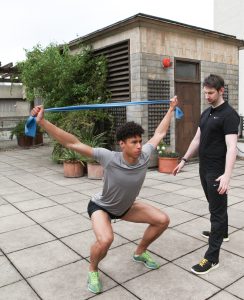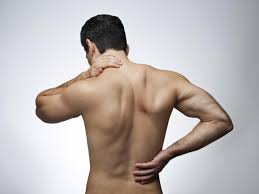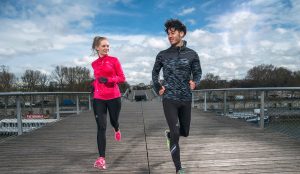


Passive vs Active Range
Passive vs Active Range Richard Kelly 7th December 2020 I want you to hold your right hand out, keep your


Posture. Apart from weight loss or injury improving posture is the most common reason I see for people to join the gym. And it’s a subject we originally looked at in one of the very first blogs on this website, here:
Is Better Posture The Answer For Better Health
We live in a world which creates a perfect storm around posture; virtually everything we do on a regular basis, from texting on a mobile phone, working on a computer or laptop or even writing on paper, puts us in forward shoulder and head position. These positions are held for prolonged periods of time and as a result start to become dominant and default. So much so that we end up sitting in forward shoulder and head positions, and even sleeping in this posture. This is called upper cross syndrome.
Upper cross syndrome is the most noticeable complaint when it comes to posture. People see it in themselves and others and don’t like it. But lower cross syndrome is just as problematic for posture. Lower cross syndrome can be characterised with people with tight hips and hamstrings, weak glutes and lower core. Sometimes this can even manifest as lower back pain.
When working with people to improve posture I typically start from the bottom up, as problems around the hips and lower core are always more significant both to exercise and in day to day life. The hips need to be mobilised and the lower core needs to be strengthened, for instance. In the upper body it is typically a case of getting the chest open and strengthening the muscles of the upper back and shoulder girdle.
It may sound surprising but strengthening the body is just as important and stretching in order to create an effective posture programme. Stretching alone will not create a long term benefit to posture, all it will do is create temporary relief. Most posture programmes appear to heavily focus around stretching and completely disregard the importance of strength work to posture, but where there is tightness there has to be looseness to compensate. And therefore, in order to undo the tightness, you have to incorporate strength work to allow the stretch work to release the tightness in the body and create a long-term change.
This is why core strengthening exercises, deadlifts, seated rows and exercises like hanging holds or farmers walks should form a staple part of any posture programme. Once you have a good technique with these, and can use them to actively strengthen the body, then bringing in flexibility work to open up the body is the second step. Only then will you see long term, progressive, postural improvement.
For help and advice to improve your posture email enquiries@rkfitness.co.uk



Passive vs Active Range Richard Kelly 7th December 2020 I want you to hold your right hand out, keep your



Why Running isn’t the answer to weight loss Richard Kelly 30th November 2020 Quite often I meet people who have


The fitness industry is a fraud Richard Kelly 23rd November 2020 The problem with my industry is that a great



Passive vs Active Range Richard Kelly 7th December 2020 I want you to hold your right hand out, keep your



Why Running isn’t the answer to weight loss Richard Kelly 30th November 2020 Quite often I meet people who have
You’ll receive all the latest news, posts and information regarding health and fitness.